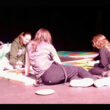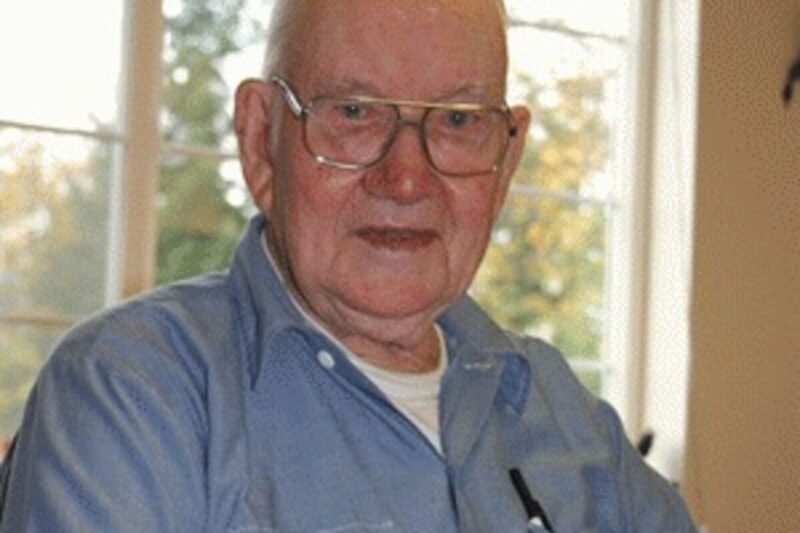Scott Swanson
Of The New Era
For George Swindle, the Navy was a way out of the Great Depression.
Where it took him was Pearl Harbor and way beyond.
Swindle, 88, now a resident at Wiley Creek Community, grew up in Alabama, one of 14 children. His father was a merchant. The fact that his father was not jobless, as so many were, made it difficult for him to get a job in one of the government programs offered during the Depression.
“In 1939, there was no work for a kid growing up in Alabama,” Swindle recalled. “I remember working for 10 cents an hour unloading slag from a box car. I was lucky to get that.
“Your father had to be poor. Thatís what they used to tell us.”
So, in 1939, he began what would become 9 1/2 years in the Navy.
He was assigned as a gunner’s mate-striker on the heavy cruiser USS San Francisco.
By December 1941 he was less than a year away from being eligible for discharge. His ship was docked in Pearl Harbor for repairs to its boilers on Dec. 7, 1941 when the Japanese planes struck.
Swindle said he remembers being down in the mess hall, drinking coffee, when the strike came. The cook came down the ladder, yelling that they were being attacked.
“Then I heard shouting and I realized it was real,” he said.
“It was terrible,”Swindle added. “Smoke — you could hardly see. It was coming from the battleships and other ships they were bombing there. The (Japanese) had that planned pretty good.”
He ran upstairs and got on a two-inch gun, but all the ammunition was locked up. Enlisted men didn’t carry keys, so Swindle and his mates had to get an officer to unlock the ammo.
As soon as the San Francisco’s boilers were put back together, the ship headed out, “went hunting (Japanese).”
In early 1942, Swindle returned to the States, to Washington, D.C., for training as a gunner’s mate on a 40-mm gun. He was assigned to the USS Columbia, a brand-new Cleveland-class light cruiser, of which he is a plank owner, meaning he was one of the crew members on the ship’s maiden voyage.
The Columbia headed for the Pacific through the Panama Canal and “covered everything from Guadacanal to the Philippines” Swindle said.
Arriving in time to participate in the final phases of the Guadacanal Campaign in late January 1943, the Columbia “hung around for a couple of months, trying to starve out the Japanese,” Swindle said.
“We ran the slot between the islands every night and we sank a lot of cargo,” he remembered. “We took a salvo through the bow but we didn’t lose any guys. We didn’t lose a man due to the (Japanese) until we hit the Philippines.”
In the Philippines, the Columbia preceded the rest of the strike force to which it was attached, “softening up” the Japanese all the way up the length of the islands in preparation for the landing by the Americans.
It was a costly operation. The Columbia was attacked by dive bombers, torpedo planes “and what not,” Swindle said. “We sure paid for it in the Philippines.”
He said the ship had 161 men killed outright and “God knows how many injured.”
Swindle said he experienced kamikaze suicide pilots throughout the war, even in Pearl Harbor, and the Columbia took three hits from kamikazes in the Philippines, which forced it back to San Francisco for repairs.
There he transferred to the ammunition depot at Seal Beach, south of Los Angeles, for a short time, before joining the northern fleet. Then went to the mothball fleet in Long Beach, where he ” took care of spare parts for the guns.”
He left the Navy in June 1948 and “did a little bit of everything,” including working as an overhead crane operator, in a foundry, cutting flagstones for a cement contractor, doing millwork and working at an auction for 10 years.
He lived in Grants Pass for 50 years before moving to Sweet Home in 1997, where his nephew, Jim Basting, works for the Oregon Department of Forestry.
Swindle has two complaints about his military service — that “they lost all my health records” and that he never got a purple heart.
He did get injured while in the Philippines, but it was when he got burned by a “hotfoot trick” in which someone left a lit match stuck between his shoe and the sole of his foot while he was asleep.
“If it hadn’t been for a Filipino, I might have been burned up,” Swindle said, gruffly. As it was, he was burned halfway up his calf.
“The only reason I didn’t get a purple heart is you have to be burnt or shot by the enemy,” he said.
But overall, he enjoyed his experience in the Pacific.
“I have good memories of the Philippines,” he said. “They sent us in there first. We went through a battle there.”





